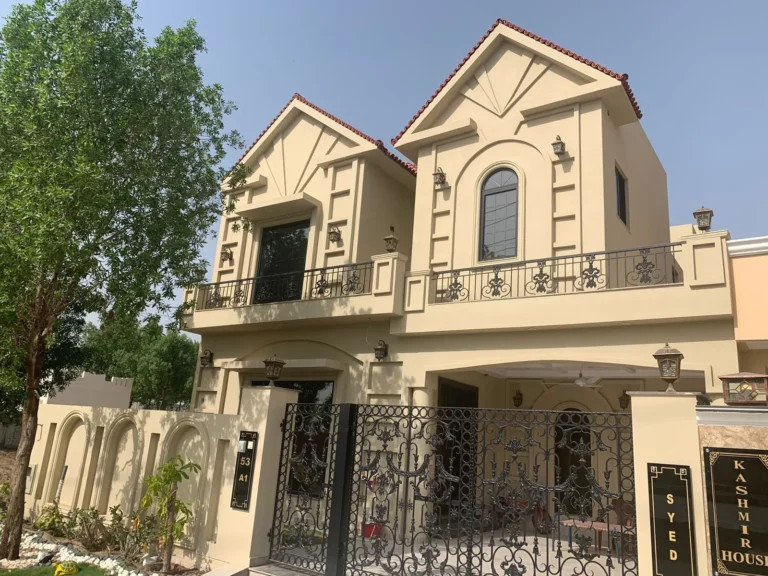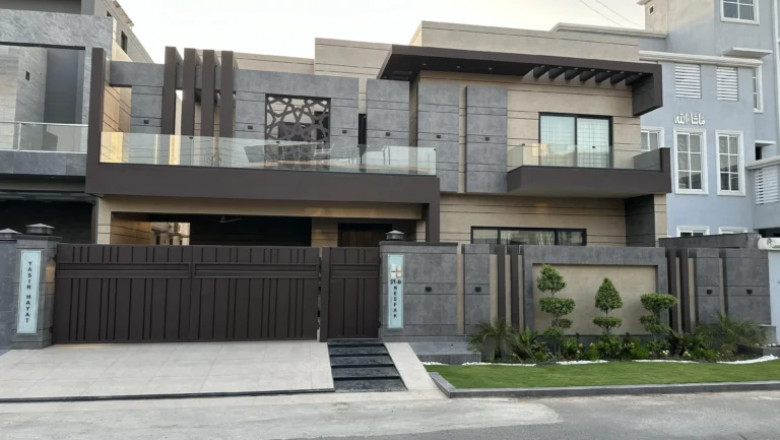views
Mid-century modern architecture is a distinctive style that emerged in the mid-20th century and has continued to influence the world of design and construction. Characterized by clean lines, open spaces, and a strong connection to nature, this architectural style offers a timeless aesthetic that remains popular today, even in Pakistan. But what exactly makes Mid-Century Modern architecture so special? In this blog post, we’ll dive deep into the key features of this style, the influences that shaped it, and how it’s still relevant in modern construction projects.
What is Mid-Century Modern Architecture?
Mid-century modern architecture refers to the style that developed in the United States between the 1940s and 1960s. It was part of a broader cultural movement that also influenced furniture design, interior decor, and art. The style grew out of earlier architectural movements like the Bauhaus school of design, which emphasized functionality, simplicity, and the use of new materials.

Historical Background and Influences
Mid-century modern architecture didn’t appear out of nowhere. It was influenced by several earlier movements and trends, including:
-
Bauhaus and International Style: The Bauhaus school, founded in Germany in the early 20th century, had a major impact on architecture worldwide. The principles of functional design, minimalism, and the use of industrial materials were adopted by architects in the U.S. and elsewhere. The International Style, which evolved out of Bauhaus principles, also promoted the use of clean lines and functional forms, both of which became central to Mid-Century Modern design.
-
Post-War Optimism: The post-WWII period was marked by a sense of optimism and a desire for progress. This cultural mindset led architects to experiment with new materials and innovative design, which resulted in the creation of homes and buildings that felt open, airy, and modern. In Pakistan, this period also saw the rise of new cities and infrastructural projects that incorporated these ideals.
-
Nature and the Environment: Many Mid-Century Modern designers were inspired by the natural world and sought to integrate their buildings with the environment. Large windows, open spaces, and natural materials were common features that helped connect the indoor and outdoor spaces.
-
Technological Advancements: The rise of new materials such as steel, glass, and concrete gave architects the freedom to design buildings with large windows, open floor plans, and flat roofs. These materials allowed for a level of experimentation that wasn’t possible in earlier periods.
Learn more: https://rsmdevelopers.com/interior-designer-lahore/
Key Features of Mid-Century Modern Architecture
When we talk about Mid-Century Modern architecture, there are a few key features that stand out. These characteristics define the style and make it easily recognizable, even in modern buildings today.
1. Open Floor Plans
One of the most important aspects of Mid-Century Modern homes is the open floor plan. Instead of dividing the interior space into many small rooms, architects embraced large, open living areas. This design promoted a sense of freedom and flexibility, allowing for easy flow between rooms. Open floor plans also made homes feel more spacious and light-filled, a principle that many homeowners still seek today.
In Pakistan, especially in cities like Lahore and Karachi, modern homes are incorporating open-plan living areas to create a more relaxed, spacious environment. These layouts are often complemented by large windows that provide natural light and a visual connection to the outdoor spaces.
2. Large Windows and Natural Light
Mid-century homes often feature large, expansive windows that allow natural light to flood the interior spaces. The focus on natural light was not just for aesthetic reasons; it also contributed to the feeling of openness. The large windows often overlooked gardens, patios, or nature, blurring the boundaries between indoor and outdoor spaces.
In Pakistan, where temperatures can reach extreme highs during summer months, large windows are sometimes used strategically to allow for cross-ventilation, ensuring better airflow and cooling.
3. Flat Roofs and Clean Lines
The design of Mid-Century Modern homes often featured flat roofs and clean, geometric lines. This was a departure from the traditional gable or pitched roofs that were common in earlier architectural styles. Flat roofs not only added to the modern aesthetic, but they also provided space for outdoor terraces or gardens, offering homeowners more usable space.
In Pakistan’s cities, flat roofs are a common feature in newer homes and buildings, particularly in urban areas where maximizing space is a priority. These flat roofs can be used for rooftop gardens, sitting areas, or even small solar panel installations.
4. Integration with Nature
Mid-Century Modern architecture emphasizes a strong connection to the outdoors. Homes were often designed with large windows and sliding glass doors that opened up to patios, gardens, or terraces. The goal was to create a seamless transition between the inside of the home and the surrounding landscape.
In Pakistan, with its diverse climate and beautiful natural surroundings, this feature resonates well. Architects often design homes that open onto courtyards, gardens, or balconies to bring nature inside. This integration enhances the living experience by promoting relaxation and well-being.
5. Minimalistic and Functional Design
Another key feature of Mid-Century Modern design is minimalism. The style embraces simplicity and function over ornamentation. There are clean, straight lines with little to no decoration. The focus is on creating spaces that are practical and efficient, using as few elements as possible.
This minimalistic approach fits well with the growing trend in Pakistan for modern, practical living spaces that don’t overwhelm the senses. With an emphasis on functionality, Mid-Century Modern homes are often designed to accommodate busy lifestyles, offering versatile spaces for both living and working.
6. Use of New Materials
The Mid-Century Modern era saw the introduction of new materials that helped shape the architectural landscape. Concrete, steel, and glass became popular choices for construction, allowing for larger windows and open spaces. These materials were also more affordable and durable, which helped revolutionize the way homes and buildings were constructed.
In Pakistan, where infrastructure development is constantly evolving, the use of modern materials in construction has become more widespread. Concrete and steel are frequently used for both structural and decorative elements, bringing a contemporary edge to many buildings.
7. Indoor/Outdoor Living
Mid-Century Modern homes were often designed with the goal of creating a fluid indoor/outdoor lifestyle. Patios, courtyards, and outdoor gardens were integral parts of the design. The seamless flow between the inside and outside allowed homeowners to enjoy nature and fresh air without leaving the comfort of their homes.
In urban areas like Islamabad and Karachi, architects have embraced this idea by designing homes with spacious courtyards, balconies, and terraces that create a similar indoor/outdoor experience. This type of design is especially popular in areas with mild climates, allowing residents to enjoy outdoor living for most of the year.
Influence on Modern Architecture in Pakistan
While Mid-Century Modern architecture originated in the West, its influence has made its way to Pakistan and other parts of the world. Architects in Pakistan have adapted these design principles to suit local needs and conditions. The emphasis on open spaces, natural light, and functional design aligns well with the modern lifestyle in cities like Karachi, Lahore, and Islamabad.
Modern homes in Pakistan often feature elements of Mid-Century Modern design, such as open floor plans, large windows, and the use of concrete and steel. These designs not only provide aesthetic appeal but also offer practical solutions to the challenges of urban living, such as limited space and the need for energy-efficient homes.
Conclusion
Mid-Century Modern architecture has left an indelible mark on the way we design and build homes today. Its focus on open spaces, natural light, and a seamless connection with nature makes it a timeless style that continues to influence modern design. In Pakistan, the principles of Mid-Century Modern design are being embraced in residential and commercial projects, offering a fresh, functional, and visually appealing approach to architecture. Whether it’s the clean lines, flat roofs, or expansive windows, this architectural style remains relevant and highly sought after, even as we move further into the 21st century.
Get more information about this: https://rsmdevelopers.com/architect-lahore/






















Comments
0 comment